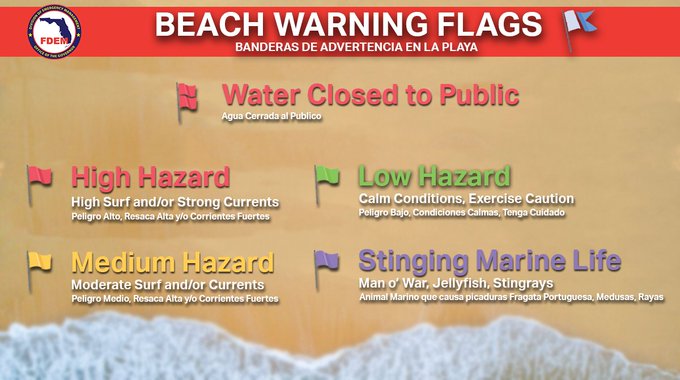Current Weather Outlook
Statewide weather outlook from Florida Division of Emergency Management MeteorologyMonday, May 6, 2024
...Foggy Conditions to Lift by Mid-Morning Along Portions of Panhandle and Big Bend...Isolated to Widely Scattered Showers and Thunderstorms to Develop Later this Afternoon and Evening Due to Sea Breeze Collision...Locally Strong to Severe Thunderstorms Cannot Be Ruled Out at Times...Lightining, Gusty Winds, Small Hail, Heavy Downpours Possible...Localized Flooding and Ponding of Water Possible Within Heavy Downpours or Slow-Moving Activity...Patchy to Locally Dense Fog Possible Overnight Over Recently Rained On Areas...Moderate to High Risk for Rip Currents Returns to All Panhandle and East Coast Beaches...
Updated at 9:28 AM EDT
Today's Threats:
| No Threat | Low Threat | Medium Threat | High Threat |
| Lightning | Damaging Wind/Hail | Tornado | Flash Flooding | Fog (Overnight) | Wildfire | River Flooding | Rip Currents |
|
Locally Northeast Florida, I-75 Corridor & Southwest Florida Statewide |
Locally Iso. I-75 Corridor & Suwannee Valley |
Locally Iso. I-75 Corridor & Southwest Florida |
Locally Suwannee Valley Big Bend & Northeast Florida Iso. Nature Coast |
West-Central & Interior Peninsula |
Santa Fe River at Three Rivers Estates |
Panhandle & Southeast Florida Northeast & East Central Florida West Coast |
![]()
Weather Summary for the Next 24 Hours:
Dense Fog Advisories will remain in effect along portions of the Panhandle and Big Bend through the mid-morning hours as foggy conditions and low clouds have reduced visibility to ¼ of a mile or less at times. As foggy conditions dissipate and lift, high pressure will take over and lead to warm and dry conditions into the afternoon. The area of high pressure will gradually shift from the eastern seaboard and towards the western Atlantic waters, which will help the Atlantic and Gulf sea breeze boundaries to move inland. As the sea breeze boundaries move inland, they will collide later this afternoon and evening allowing for isolated to widely scattered showers and thunderstorms to develop over the Suwannee Valley, along the I-75 corridor and into Southwest Florida (25-45% chance of rain). While organized severe weather is not expected, an upper-level feature moving overhead later this afternoon may allow for isolated locally strong to severe thunderstorms to develop during the peak heating hours of the day. Any stronger thunderstorm activity that develops will be capable of producing frequent lightning, gusty winds (40-50 mph), small hail (pea size) and heavy downpours. Any slow-moving or near stationary showers and thunderstorms to lead to localized instances of flooding and ponding of water across any urban and low-lying/poor drainage areas within heavy downpours. High temperatures will steadily climb into the middle 80s to low 90s across the state, with the sea breeze flowing onshore keeping coastal areas slightly cooler.
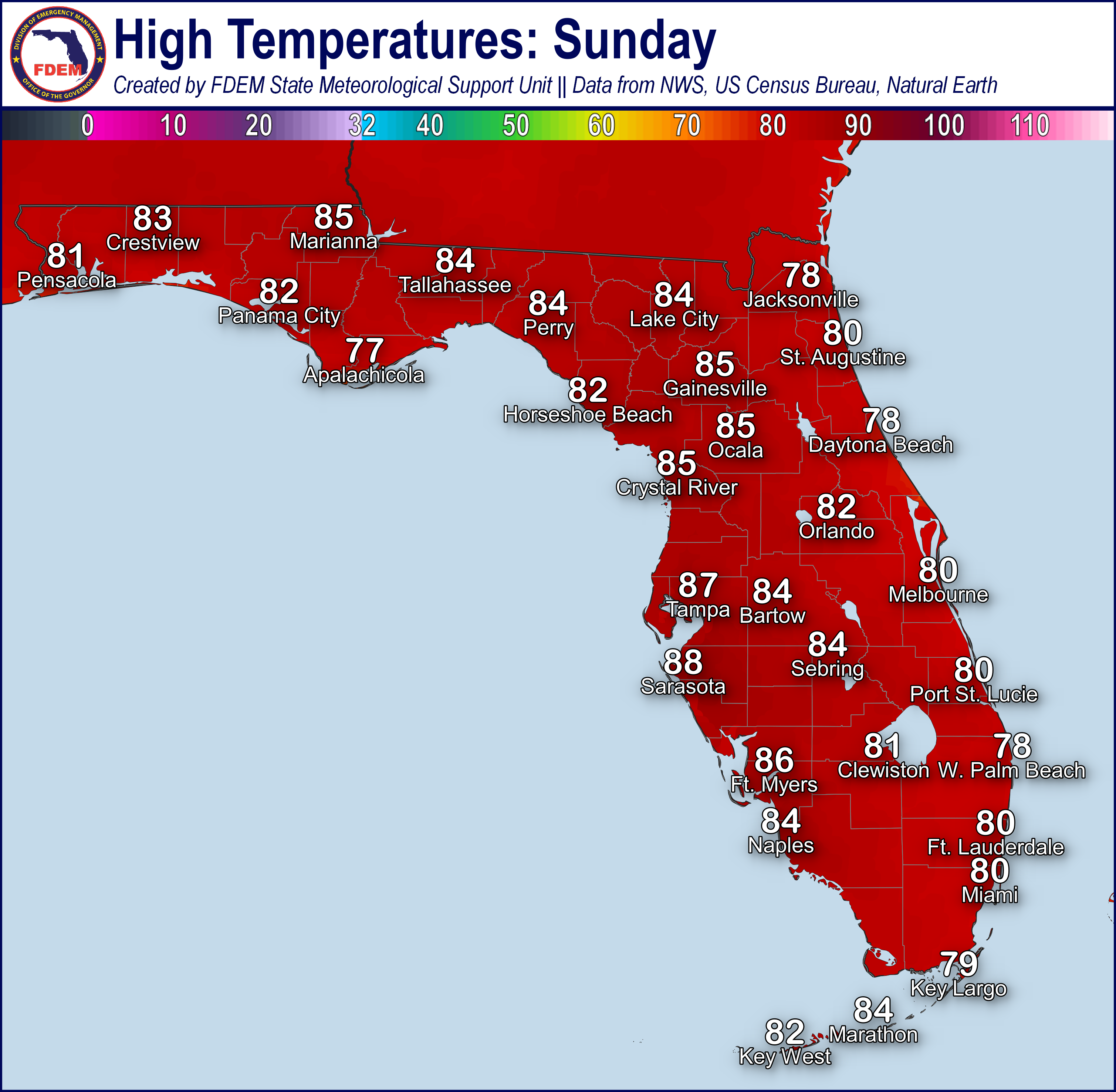
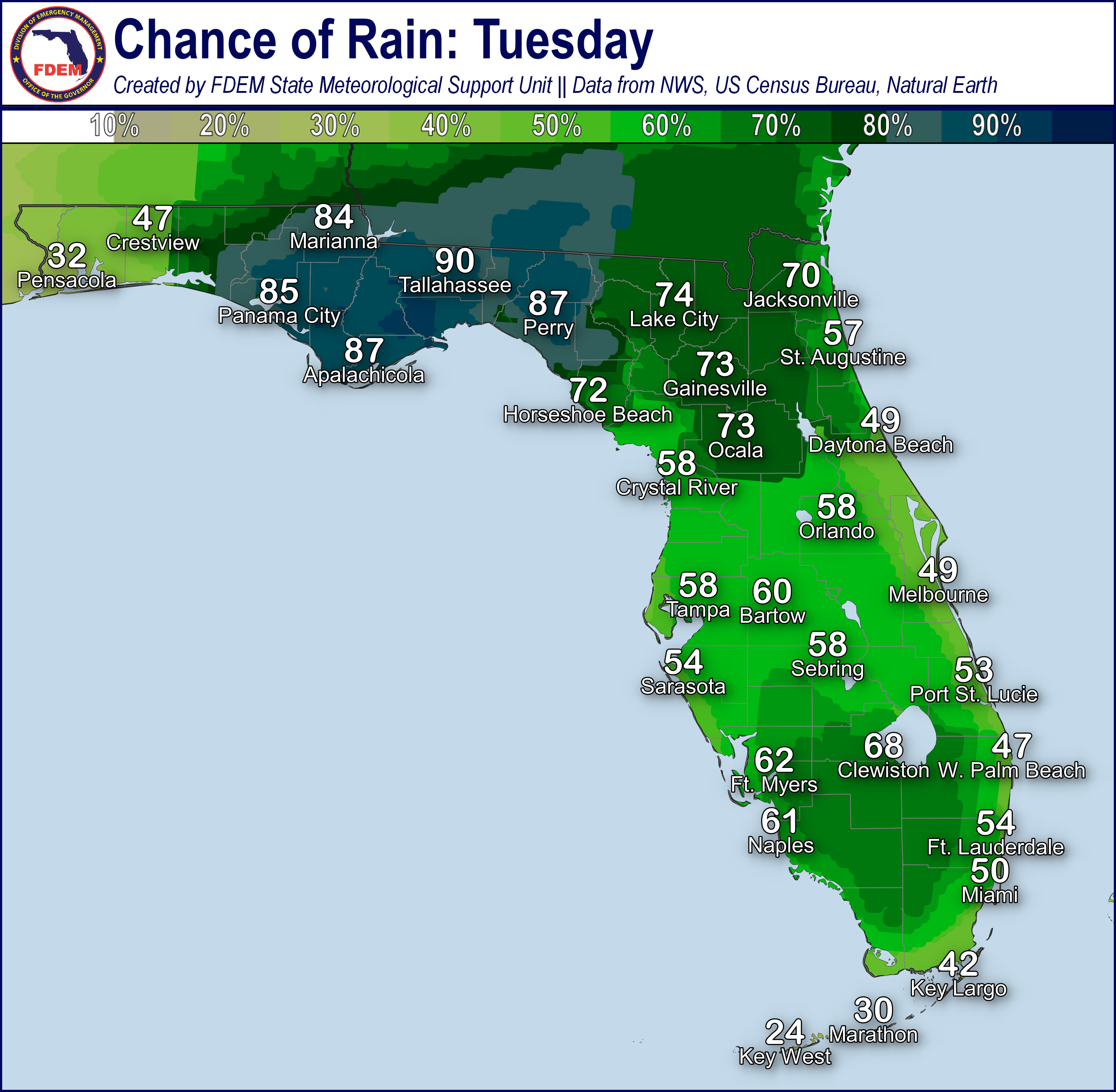
Shower and thunderstorm activity will gradually dissipate and weaken through the late evening hours and shift towards the coastlines (15-30% chance of rain). A few showers may linger along the coastline and over the adjacent coastal waters. Patchy to locally dense fog will be possible overnight and early Tuesday morning along portions of the Big Bend and Suwannee Valley, especially across areas that received rainfall earlier in the day. Low temperatures will fall into the middle 60s to middle 70s. The Florida Keys will see low temperatures in the upper 70s and near 80-degrees, providing little relief to daytime high temperatures.
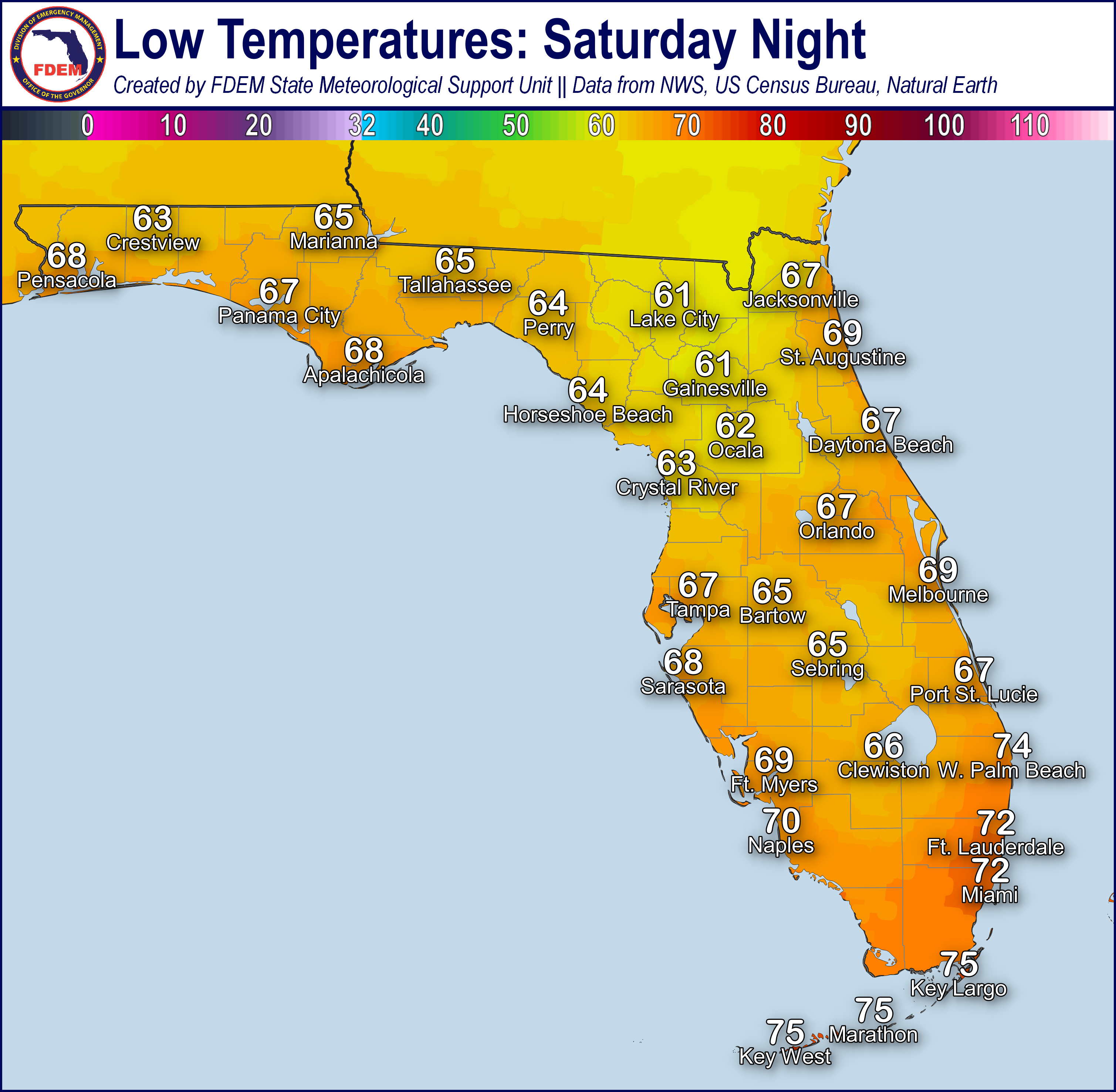
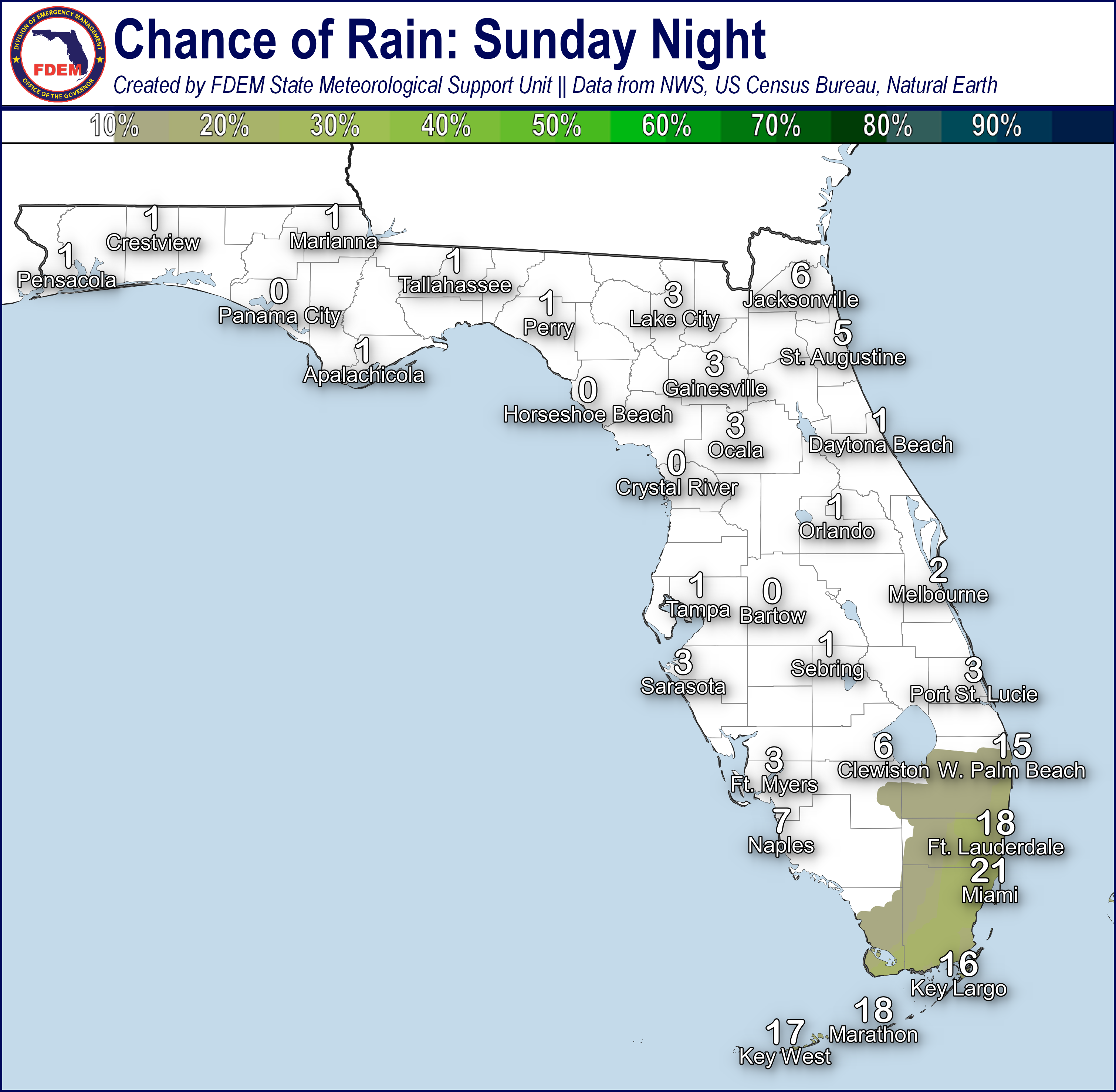
![]()
Rip Currents: A moderate to high risk for rip currents has returned for all Panhandle and East Coast beaches due to elevated onshore winds. A low risk for rip currents continues along West Coast beaches. For the latest Rip Current Outlook, visit www.weather.gov/beach.
Marine Hazards: Onshore winds along beaches will keep wave heights near 2-3’ nearly statewide. A localized ocean swell offshore from Atlantic-facing Key beaches will continue to produce wave heights of 3-5’.
Red Tide has not been observed at or above background levels over the past week.
Coastal Flooding: There is no risk of coastal flooding today.
![]()
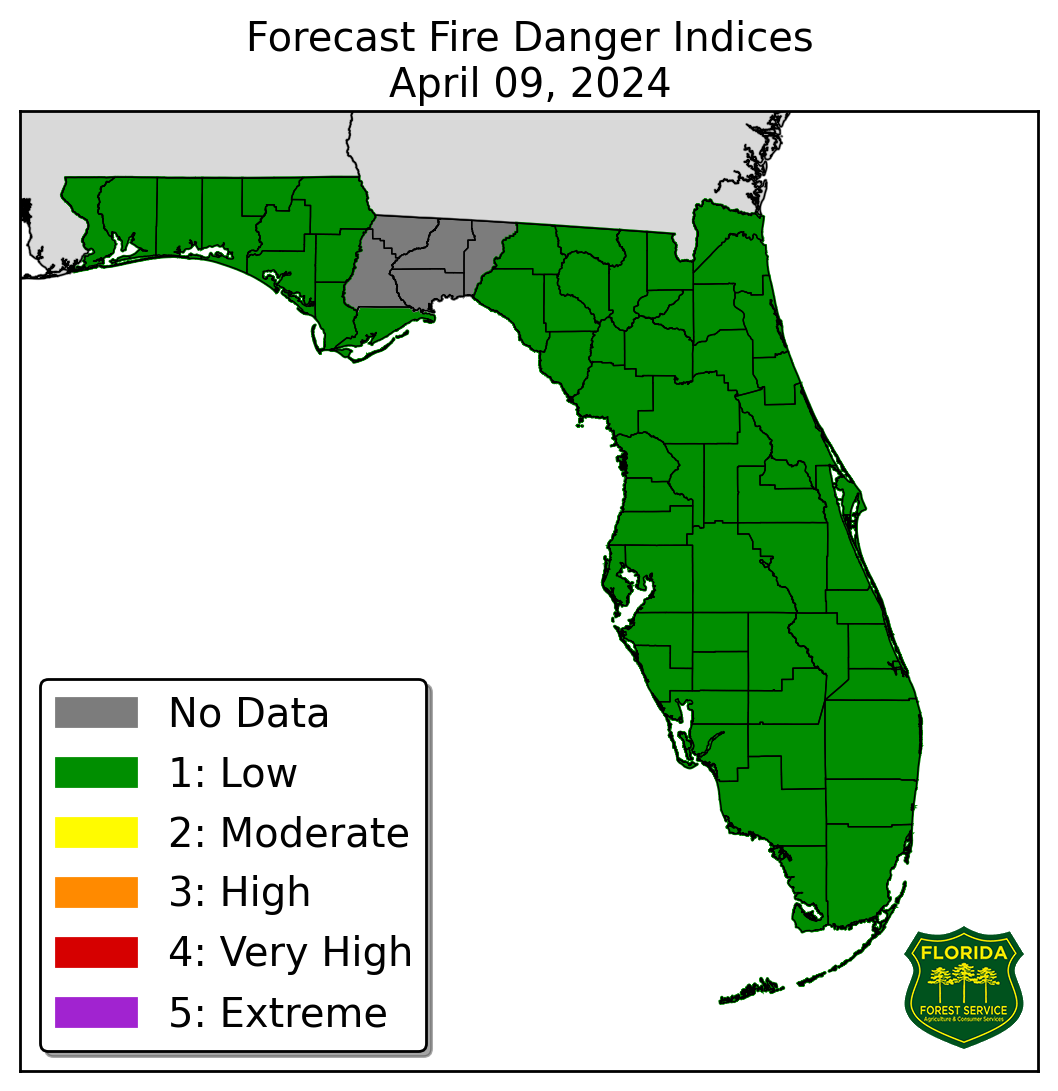
Fire Weather: Foggy conditions and low clouds along portions of the Panhandle and Big Bend will lift and dissipate through the early to mid-morning hours. High pressure influence will continue to bring warm and dry conditions throughout the afternoon hours before the sea breeze boundaries collide with one another. A pocket of dry air remains settled within West-Central Florida and will allow for relative humidity values to fall near critical thresholds this afternoon (middle to upper 30%). Southerly to southeasterly winds near 8-10 mph will persist throughout the day, with wind gusts upwards of 10-15 mph at times. The sea breeze may allow for locally gusty winds upwards of 20 mph at times. The collision of the sea breeze boundaries will give way to isolated to scattered showers and thunderstorms develop later in the afternoon and evening. Any thunderstorm activity that develops will be capable of producing lightning and erratic winds that may ignite or contribute to the spreading of wildfires. Patchy to locally dense fog will be possible overnight and early Tuesday morning along the Suwannee Valley. Foggy conditions may reduce visibility further where there are ongoing wildfires. According to the Florida Forest Service, there are 48 active wildfires across the state burning approximately 1182 acres.
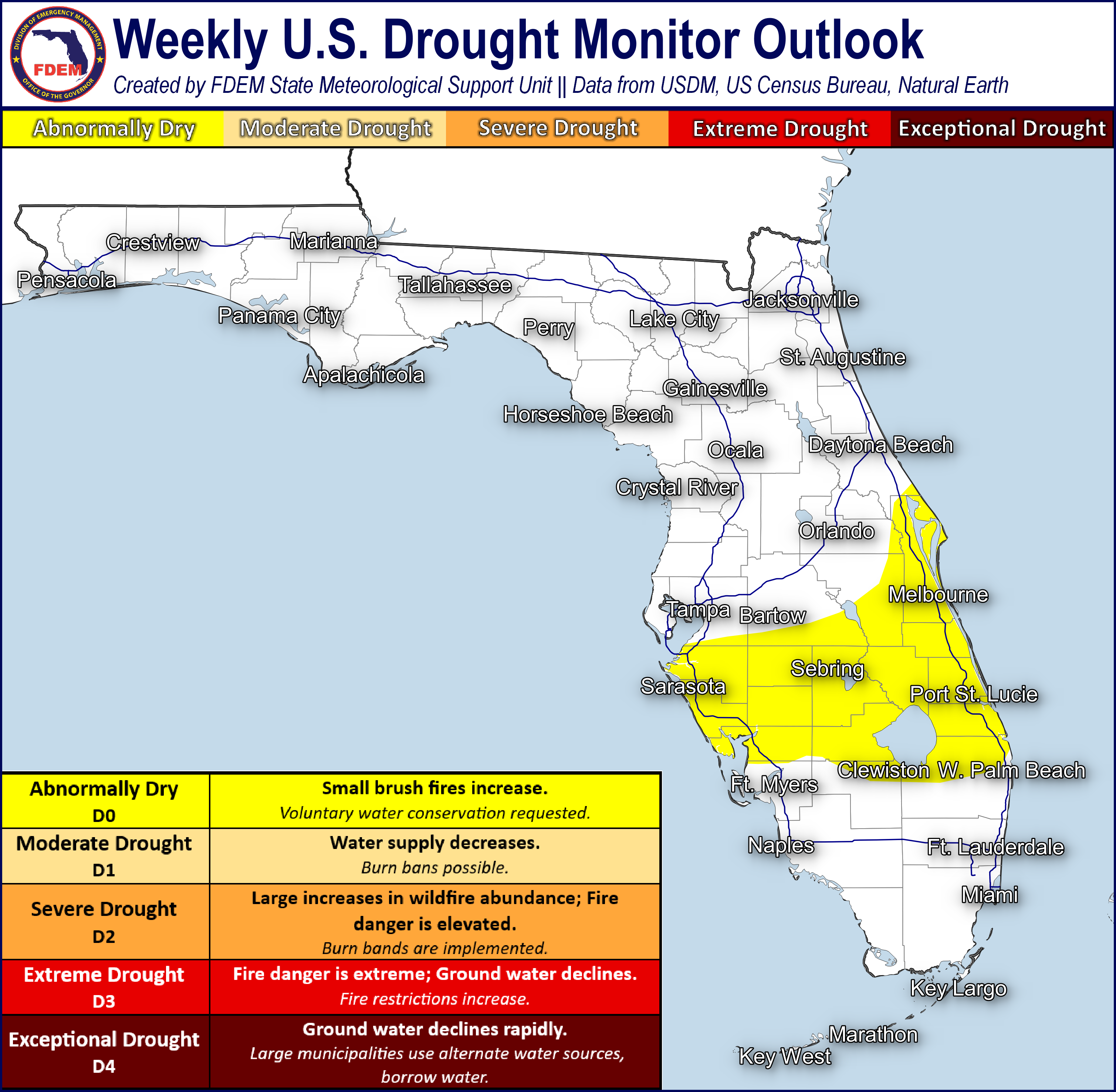
Drought: High pressure has continued to yield relatively dry conditions and near to above normal temperatures statewide over the last week, leading to high evaporative demand and locally decreasing streamflow. Several recent brush fires have been noted and there has been an increased concern for more as short-term dryness and drought continue. Abnormally dry (emerging drought) conditions have expanded along further northward and southward across Central and Southern portions of the Peninsula on this week’s drought monitor update and now stretch from the from the I-4 and south to the I-75 and from the West to the East Coast. Moderate Drought conditions have been introduced to eastern portions of the region from Brevard County to Palm Beach County and surrounding Lake Okeechobee as rainfall deficits continue to increase. Above normal temperatures and below normal rainfall expected across the region over the next week will likely exacerbate drought conditions.
The Keetch-Byram Drought Index average for Florida is 353 (+5) on a scale from 0 (very wet) to 800 (very dry). There are five Florida counties (Brevard, Highlands, Indian River, Sarasota and St. Lucie) with an average KBDI over 500 (drought/increased fire danger).
![]()
Flash Flooding: There is no organized risk for flash flooding today. Isolated to widely scattered showers and thunderstorms will develop late this afternoon and evening along the sea breeze boundaries. Localized elevated moisture along the I-75 corridor and through Southwest Florida will give way to heavy downpours within stronger shower and thunderstorm activity at times. Heavy downpours will be capable of producing instances of localized flooding and ponding of water across urban and low-lying/poor drainage areas. Any shower or thunderstorm activity that develops will likely move very slowly or remain near stationary for periods of time, which could also contribute to an increased potential for localized flooding. Rainfall totals of 1-2” will be possible with any stronger thunderstorm activity that develops.
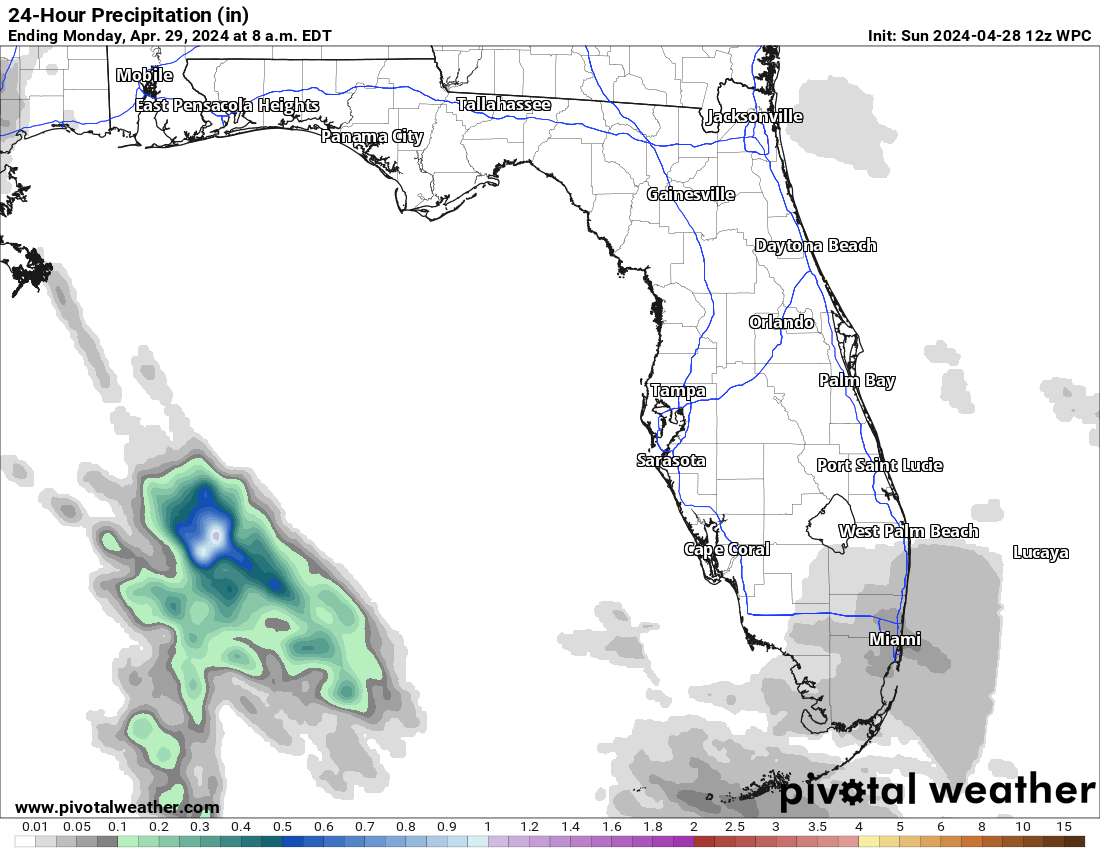
Riverine Flooding: A River Flood Warning remains in effect along the Santa Fe River at Three Rivers Estates as minor flooding is occurring and is forecast to continue through the end of this week. Portions of several Big Bend and Suwannee Valley rivers (including several portions of the Suwannee River) remain in Action Stage (bank-full); however, water levels are continuing to fall. While rivers that see locally higher rainfall totals across the basins today could see local rises in water levels, riverine flooding is not anticipated. There are no additions riverine flood concerns at this time. For more details, please visit the River Forecast Center.
Lake Okeechobee’s average elevation is 14.06 feet, which is within the operational band and 0.56 feet above normal for this time of year.

